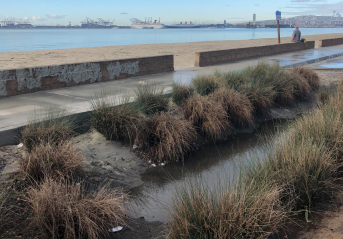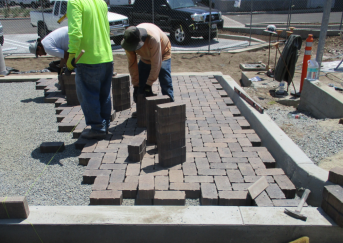Tool developed to assess BMP performance effectiveness

The California BMP Effectiveness Calculator, unveiled in March and publicly available online, provides a wealth of California-specific data on the performance effectiveness of a common type of engineered BMP solution known as a flow-through BMP. With a flow-through BMP, contaminants are treated and removed as stormwater passes through.
Southern California’s stormwater management community has invested millions of dollars – and is planning to invest billions more in the coming decades – to install BMPs to improve the water quality of wet-weather runoff, even as the long-term performance effectiveness of these solutions remains murky.
California stormwater managers will be able to use the California BMP Effectiveness Calculator to assess how well five types of flow-through BMPs perform in treating more than a dozen types of stormwater contaminants, from dissolved copper to nitrate. The web-based calculator automatically estimates the concentration of the effluent, based on incoming contaminant concentration in the stormwater.
The calculator also automatically calculates the level of certainty associated with estimates of BMP performance effectiveness. These certainty analyses historically have been done in an ad-hoc, non-standardized manner, even as these analyses are a critical component of modeling the effectiveness of BMPs that have yet to be implemented in a watershed.
In particular, estimating the effectiveness of yet-to-be-implemented BMPs is a foundational aspect of Alternative Compliance, a new regulatory approach for complying with stormwater discharge permits that is being used across Southern California.
Under an Alternative Compliance pathway, long-term water-quality improvement plans are supported by reasonable assurance analysis (RAA) to demonstrate that the BMPs planned over the next two to three decades will meet desired improvement goals.
The BMP calculator plays a key role in bringing rigor and standardization to how stormwater managers conduct RAA for Alternative Compliance in California.

Using the tool, researchers found that treatment effectiveness varies by BMP type, with some flow-through BMPs performing better than others for certain pollutants. Researchers also found that while no BMP removed all pollutants, flow-through BMPs are effective in locations where stormwater flows either cannot or will not infiltrate into the ground.
Researchers, however, still lack sufficient data to fully understand the specific reasons behind variability in flow-through BMP performance. SCCWRP and its partners are working to collect more data so they can continue to investigate factors such climate, geology, design and maintenance.
Researchers also compared the performance of four different statistical approaches for calculating uncertainty of the performance estimates, concluding that a new approach known as quantile regression is the optimal method.
The finding is significant because no standardized method exists for assessing BMP performance. Even so, the BMP calculator allows users to select from any of the four analysis methods.
For more information, contact Ken Schiff.
More news related to: Runoff Water Quality, Stormwater BMPs, Top News